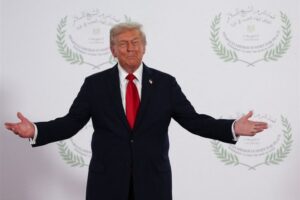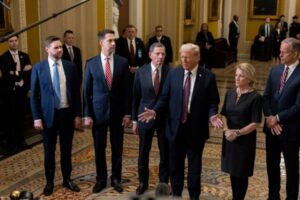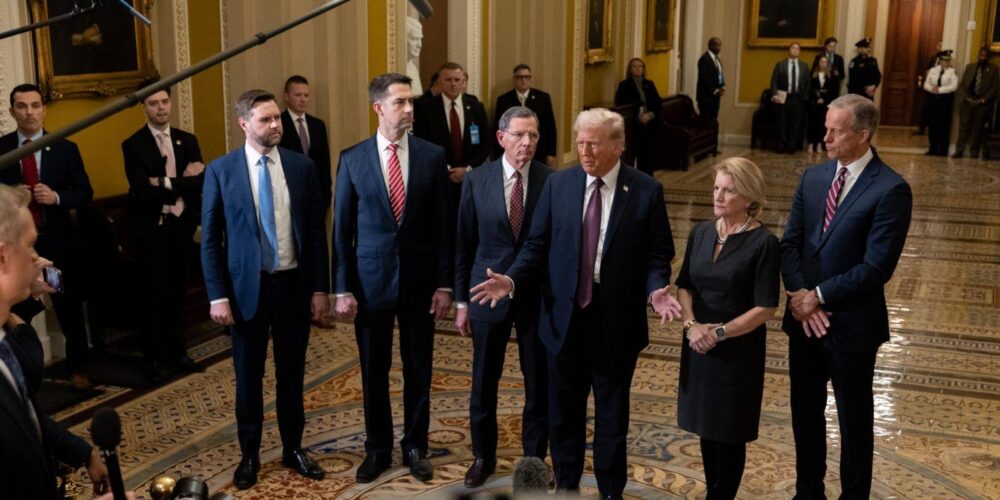President Donald Trump’s economic strategy, which includes unprecedented federal interventions such as acquiring minority government stakes in private companies, implementing broad tariffs, slashing taxes, and deregulating industries, is facing sharp criticism from experts who argue it lacks a coherent and effective industrial policy framework. Mariana Mazzucato, an esteemed economist and professor at University College London, expressed in a recent interview that Trump’s approach is more of an erratic mix of policies rather than a strategic plan aimed at fostering sustainable economic growth.
Mazzucato emphasizes that successful industrial policy requires a clear vision of the problems to be addressed and coordinated public investments designed to solve those challenges. Instead, Trump’s policies—such as taking equity stakes in companies like Intel without linking these moves to value creation or innovation—appear more like symbolic gestures aimed at showcasing strength, but they risk weakening the economy by unraveling the productive industrial strategies that historically fostered companies’ success over the past century. Taking stakes without fostering innovation or demand-side market creation is, in her view, merely a clawback rather than building sustainable industrial capacity.
Industrial policy, in her understanding, is a complex portfolio of coordinated actions involving subsidies, procurement, research, and innovation incentives that collectively guide an economy toward growth and competitiveness. Mazzucato cites the historic role of the U.S. government in fostering Silicon Valley through both supply-side measures—such as loans and subsidies—and demand-side policies like the Small Business Innovation Research program which requires government departments to allocate a percentage of their budgets to innovative small and medium enterprises. Crucially, these measures were linked to targeting specific outcomes, such as leading the digital and AI revolutions, which contrasts with Trump’s more ad hoc interventions.
The expert also notes that Trump’s approach lacks the conditions or strategic direction needed to ensure that the companies receiving support innovate and contribute to economic leadership. In contrast, successful industrial policy includes conditional loans or subsidies tied to goals such as reducing carbon emissions, which encourage large companies to innovate and maintain competitiveness. Without such a framework, government investments risk supporting stagnant or uncompetitive firms.
Mazzucato further critiques the dismantling of key U.S. institutions that have historically underpinned competitiveness, such as research agencies like NIH and DARPA. These bodies have played essential roles in breakthroughs ranging from the internet to GPS and touchscreen technology by setting clear public-sector goals and enabling private-sector innovation. Trump’s policies, she warns, threaten the backbone of U.S. innovation by cutting resources and reducing support for such entrepreneurial state functions.
Examining trade and tariff policies, the economist acknowledges that while both Biden and Trump support “Made in America” objectives, their methods diverge significantly. Biden’s approach aimed to enhance competitiveness through fostering innovation and less hostile trade policies without erecting barriers that prevent market entry. In contrast, Trump’s tariffs, especially those imposing a blanket 10% tax on all imports and higher rates on certain countries, have been shown in economic models to reduce long-run GDP by as much as 6%, reduce wages, and increase uncertainty that depresses investment. While the tariffs generate significant government revenue, they also decrease openness, capital inflows, and worker productivity, potentially inflicting longer-term damage.
Regarding manufacturing reshoring, Mazzucato stresses that merely relocating manufacturing jobs back to the U.S. without a smart industrial strategy ensuring that industries remain technologically advanced and innovative isn’t a sustainable growth model. Instead, she advocates for policies that integrate new investments within dynamic supply chains and promote innovation throughout. Examples like Denmark’s ambitious green technology sector, successfully serving worldwide markets including China, illustrate how forward-looking industrial policies linked to innovation deliver growth and competitiveness.
Finally, Mazzucato warns against crony capitalism, which she describes as a system where government favors select companies without strategic coherence or transparency, resulting in inefficient allocation of resources. She contrasts this to the ideal industrial policy that transparently encourages broad entrepreneurial activity, focusing on “picking willing” innovators rather than “picking winners.” The lack of an overarching strategic narrative in Trump’s policies, combined with reduced funding for essential government functions, undermines this vision.
In conclusion, while President Trump’s economic interventions are ambitious in scale, experts like Mariana Mazzucato argue they fall short of delivering a smart, capable industrial policy necessary for long-term economic vitality. Without a clear direction, conditional investments, and support for innovation ecosystems, these policies risk weakening the economy rather than strengthening it.










